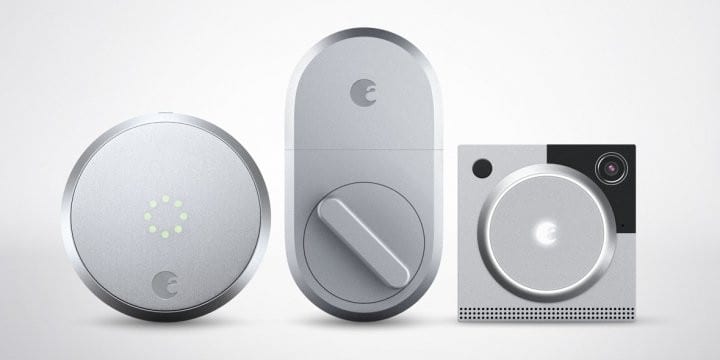Enter into the world of home-automation and you’ll very soon realise that Bluetooth and Wi-Fi aren’t the only wireless components that can allow smart devices in your new smart home to talk to one another. There are, in fact, a number of wireless technologies out there for the task. Two of the many such technologies, or languages, you will likely run into as you set up your own smart home are Zigbee and Z-Wave. So what exactly are they? Let’s find out.
Essentially, Zigbee and Z-Wave are alternative ways for your home gadgets to communicate with each other, rather than using Wi-Fi and Bluetooth. You might have, by now, guessed that they do have some advantages over the traditional two- Wi-Fi and Bluetooth. Yes, they of course do. Qualities such as low-power, big-range and high reliability, make Zigbee and Z-Wave a better choice for your smart home. But they aren’t without their differences. Before we get into the differences, here’s a brief rundown of what these wireless technologies have in common.
Z-Wave Vs. ZigBee: What do they have in common?
- Both technologies are mesh networks. This means signals hop from gadget to gadget around the home until it reaches the gateway. This eradicates the need for each device or sensor to connect to Wi-Fi. But they usually have a central hub (gateway) which connects to the internet.
- Both technologies use the Low-Rate Personal Area Network (LR-PAN) protocol.
- Zigbee and Z-Wave use the same AES-128 symmetric encryption for security.
Z-Wave Vs. ZigBee: How are they different?
- Z-Wave has a tightly controlled product ecosystem, whereas Zigbee is an open standard. Z-Wave caters to the smart home and smart building space, and currently supports only 232 devices on the mesh. Zigbee, on the other hand, can be used for a number of applications and can support over 65,000 devices on the mesh network.
- Zigbee operates on the global standard 2.4GHz ISM frequency band, whereas Z-Wave uses the 915 MHz ISM band (in the U.S.) and the 868 MHz RFID band (in Europe). This means bigger interference is possible on Zigbee. However, Zigbee is still faster with data rates at 40-250 kbps compared to Z-Wave’s 9.6-100kbps.
- Z-Wave has a larger range. With a range of 30m (100 feet), Z-Wave is better suited for larger houses and buildings. Z-Wave’s latest platform, the 700 Series, can connect up to 100m from point to point. Zigbee, meanwhile, has a range of just 10-20 metres (33-66 feet).
- Z-Wave, run by Sigma Designs, uses a proprietary radio system. Zigbee, being an open standard, has a large developer support for radios.
- Zigbee uses direct sequence spread spectrum (DSSS) for modulation, whereas Z-Wave uses frequency-shift-keyed modulation (FSK).
- Z-Wave allows a maximum of four ‘hops’ between the controller and the device, Zigbee doesn’t have a limit.
Z-Wave vs Zigbee: Compatible devices
If we go through the number of compatible devices, there’s no big difference here. Zigbee has around 2,500 compatible products from 400 members of the Zigbee Alliance. Some well known Zigbee compatible brands and products include:
- Philips Hue
- Samsung SmartThings
- Amazon Echo Plus (with Alexa)
- Hive Active Heating and accessories
- Honeywell thermostats
- Ikea Tradfri
- Belkin WeMo Link
- Yale smart locks
- Sengled smart lights
- ADT Security Hub
- Wink hub
- Somfy blinds and drapery motors
- GE Appliances
- LG SmartThinq
Z-Wave is not far behind though, with 2,400 supported devices. Its compatibility list also includes some big names, such as:
- Samsung SmartThings
- Wink hub
- Honeywell thermostats
- Hogar Milo (with Google Assistant)
- ADT Security Hub
- August smart locks
- Yale smart locks
- Logitech Home Harmony Hub Extender
- Somfy
- GE Appliances
- LG SmartThinq
- Kwikset smart locks
One thing to note here is that Z-Wave has more members than Zigbee, with 700 companies. This opens up the possibility of more devices in the future. Zigbee, however, has its own plus as it supports battery operated devices and light switches.
Zigbee vs Z-Wave: What should I go for?
Apart from all the pros and cons of the two networks you’ve just gone through, let us also tell you that Zigbee, being an open standard, runs the risk of higher interoperability problems than Z-Wave. Many wireless manufacturers use Zigbee to produce devices that aren’t actually interoperable, which can cause major issues for OEMs that are expecting interoperability. Z-Wave, on the other hand, loses an edge to Zigbee when it comes to popular, premium smart home brands and products.
All in all, the answer for which one’s best for you depends on what smart home kit you already own and what you’re looking to add. If you’re you looking for true application interoperability—where devices work without any coordination among vendors on different parts of the stack, you’re leaning towards Z-Wave. If interoperability isn’t a concern, Zigbee could be a contender. The range is also another factor that could lead you to a decision.
Made your decision between Zigbee and Z-Wave? Or you already have a mesh-network set up at home? Let us know your tips, tricks and complaints in the comments below.




















